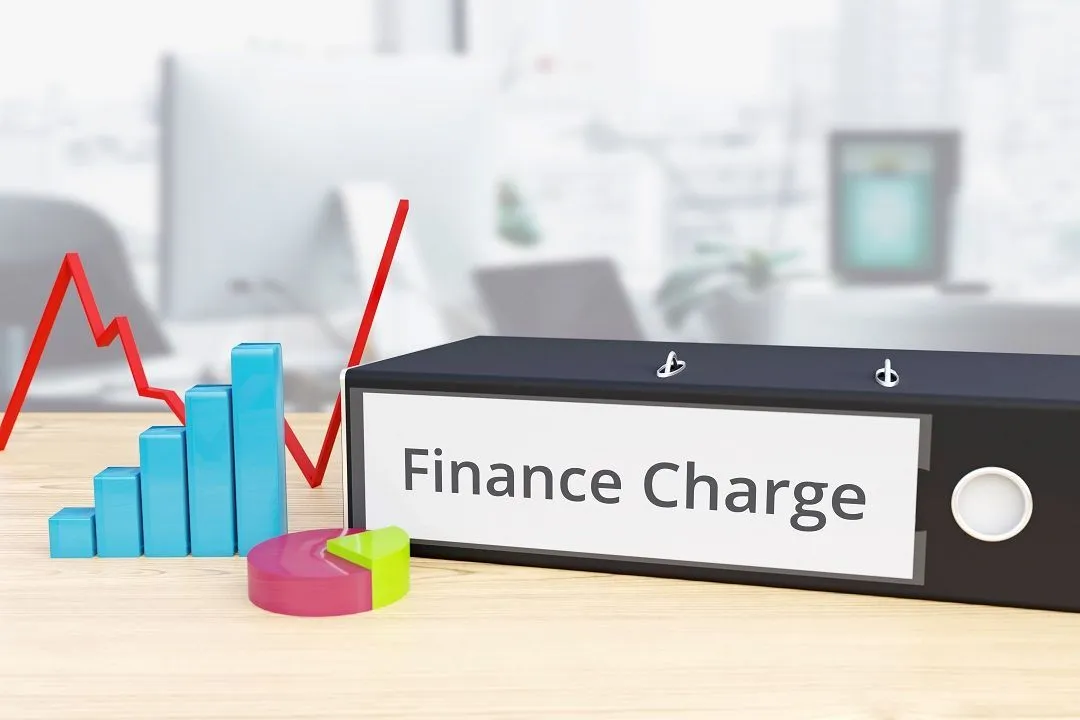Anyone who has ever taken out a loan or used a loan credit account must understand finance charges comprehensively. It can be a credit card mortgage or personal loan – it doesn’t matter. We will discover all the secrets of how to find finance charge in this guide.
When you are done, you will no longer be haunted by the problem of understanding how finance charges are calculated. You will feel confident in all the subtleties and fine print, be able to control and track records, and not pay extra. Let’s try to figure out in detail the theme of finance charges and understand how to find finance charge.
What Is A Finance Charge?
A borrower pays a finance charge to use or receive credit. It includes all the fees and interest charges associated with using borrowed money. The term is found in credit card statements, loan documents, or any other financial agreements, and it indicates the total borrowing costs over a specific period.
For this reason, borrowers need to know how to find finance charge to ensure effective financial management and sound borrowing and repayment processes. One will be required to see the balance outstanding, the annual percentage rate, and the other charges or fees presented. This knowledge enables the individual to establish the applicable charges, expenses, and fees, preparing an effective financial plan to avoid overspending.
How To Find Finance Charge?
Now that we’ve defined a finance charge, let’s get down to finding it. The way to calculate finance charges may differ depending on the credit or the type of loan you have:
- Credit cards: How to find finance charge? A finance charge credit card is customarily calculated based on the average daily balance approach or an adjusted balance method. The customer can reach the finance charge per billing cycle through the credit card statement, which is reflected in the fees. For more information, calculate the charge via special online tolls or ask your credit card issuer for clarification.
- Loans: Installment loans for cars and personal needs, for example, can be associated with simple interest or a schedule of amortization provided by the lender. How to find finance charge? You can calculate the amount of finance charge per payment period in the loan statement or by asking the lender.
- Mortgages: Regular mortgage credits can be associated with a particular finance charge due to the factors of closing costs and points present. The mortgage statement can help clarify this information, but you could always ask the lender or check your loan documents first.
- Payday loans and cash advances: Higher types of short-term credit can be associated with a TAS finance charge, but they commonly use the flat fee per borrowed sum. How to find finance charge? Calculating before making the loan is recommended due to the high charges.
- Online calculators: Another way to deal with cumulative finance is to use a loan calculator available on financing websites.
Managing Finance Charges Effectively
Finance charge management is one of the ways individuals can ensure financial stability and reduce costs. Individuals can manage finance charges on credit cards and loans by making timely payments to avoid late charges and penalties, which may significantly increase the finance charges.
Additionally, individuals must always make payments above the minimum required by the card or loans as the extra payment will directly reduce the principal balance, reducing the overall finance charge over time. Similarly, individuals should compare loans and credit card options before committing to a specific lender, including the lowest finance charges.
It would help if you negotiated fees with lenders, as some firms may waive some fees or reduce finance charges for long-serving clients or consumers with a good credit record. However, individuals can monitor their credit card and loan statements to check for anomalies or unauthorized withdrawals contributing to increased finance charges. Finally, you can always calculate the interest rates or review the loan agreements to identify finance charges.
Conclusion
Understanding how to find finance charge is critical for staying financially responsible. Analyzing the terms of one’s loans, the interest rates, and the payment schedules helps individuals determine the total cost of borrowing. Formulas like the simple interest formula or more complex APR calculations help empower borrowers to understand what they are getting into before lending.
Further, various online calculators and financial tools simplify the process of how to find finance charge and make things more straightforward and transparent. Finally, with this knowledge, individuals can engage with borrowing in an informed and intelligent way, avoiding dangerous loans and best managing their financial future.
FAQ’s
How do I calculate a finance charge?
The almost impossible way to understand how credit card companies calculate finance charges, as many consumers may agree, makes the average daily balance method familiar. AD = average daily balance; APR = annual percentage rate; N = number of days in the billing cycle: AD = (ADB × APR × N) / 365.
What is the finance charge?
The total amount of interest and loan charges paid over the life of the mortgage loan is the finance charge. It assumes you will carry the loan through its entire term to maturity and includes all the corresponding Forward Loan Charges you make before the loan matures.
Which method of calculating finance charge results?
The Past Due Plus Loan Balance method.

